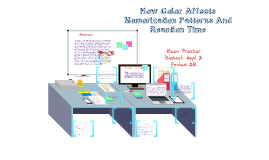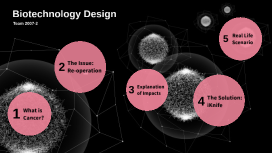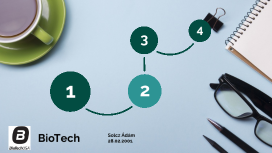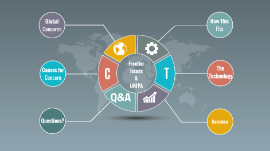BioTech presentation
Transcript: Difference-gel electrophoresis is.... Confirmation of protein regulation by Western blotting For this study, we used a 2D-DIGE approach to identify proteins associated in natural resistance mechanisms to sulfadiazine (Supplemental data 2). Protein abundance was compared between sulfadiazine sensitive and resistant strains from T. gondii with same genotype. Introduction Identification of differentially expressed proteins in sulfadiazine resistant and sensitive strains of Toxoplasma gondii using difference-gel electrophoresis (DIGE) Discussion and Conclusion. Seven strains of T. gondii tachyzoites were used in this study: RH and ENT (Type I, sensitive strain), TgA 103001 (Type I, resistant strain), ME-49 and PRU (Type II, sensitive strain), TgH 32006 (Type II, resistant strain) and TgH 32045 (defined as Type II variant, resistant strain). Identification of differentially expressed proteins. Sydney Smith In conclusion, we have identified 31 proteins which are differentially modulated between sulfadiazine resistant and sensitive strains of T. gondii according to their genotype. These proteins were predicted to be involved in several different mechanisms such as carbohydrate metabolism, host cell interaction and protein translation. Although none of them allow us to identify directly resistance mechanisms to sulfadiazine at this stage, several of these proteins represent encouraging potential targets to be followed-up. We confirmed by Western blotting proteins regulation of several proteins identified in DIGE: ENO2, IMC1, ROP2, MIC2 and GRA7 in the different strains studied. We also analyzed these proteins regulation in two others sensitive strains of genotype I (ENT) and genotype II (PRU) Ajioka, J.W., Soldati, D., 2007. Toxoplasma Molecular and Cellular Biology. Horizon Biosciences, Norfolk. Ajzenberg, D., Bañuls, A.L., Su, C., Dumètre, A., Demar, M., Carme, B., Dardé, M.L., 2004. Genetic diversity, clonality and sexuality in Toxoplasma gondii. Int. J. Parasitol. 34 (10), 1185–1196. Ajzenberg, D., Collinet, F., Mercier, A., Vignoles, P., Dardé, M.L., 2010. Genotyping of Toxoplasma gondii isolates with 15 microsatellite markers in a single multiplex PCR assay. J. Clin. Microbiol. 48 (12), 4641–4645. Alban, A., David, S.O., Bjorkesten, L., Andersson, C., Sloge, E., Lewis, S., Currie, I., 2003. A novel experimental design for comparative two-dimensional gel analysis: two-dimensional difference gel electrophoresis incorporating a pooled internal standard. Proteomics 3, 36–44. Andrade, H.M., Murta, S.M., Chapeaurouge, A., Perales, J., Nirdé, P., Romanha, A.J., 2008. Proteomic analysis of Trypanosoma cruzi resistance to Benznidazole. J. Proteome Res. 7 (6), 2357–2367. Baatz, H., Mirshahi, A., Puchta, J., Gumbel, H., Hattenbach, L.O., 2006. Reactivation of Toxoplasma retinochoroiditis under atovaquone therapy in an immunocompetent patient. Ocul. Immunol. Inflamm. 14, 185–187. Bohne, W., Gross, U., Ferguson, D.J., Heesemann, J., 1995. Cloning and characterization of a bradyzoite-specifically expressed gene (hsp30/bag1) of Toxoplasma gondii, related to genes encoding small heat-shock proteins of plants. Mol. Microbiol. 16 (6), 1221–1230. Methods and Materials Toxoplasma gondii, the causative agent of toxoplasmosis, is an obligate intracellular protozoan parasite that infects more than one-third of the world’s human population. The population structure of T. gondii consists of three main clonal lineages (Types I, II and III) correlated with virulence expression in mice. Recently, a study reveal a biphasic pattern consisting of regions in the Northern Hemisphere where a few, highly clonal and abundant lineages predominate; elsewhere, and especially in portions of South America are characterized by a diverse assemblage of less common genotypes that show greater evidence of recombination. Results. What is Toxoplasma gondii? a. protozoan parasite b. bed bug c. a protein a. 2G DIGE b. DIGE c. analyzed gel In total, 31 proteins, including four hypothetical proteins, were identified from the three experiments, 44% were overexpressed in resistant strains and 56% were over-expressed in sensitive strains. Interestingly, GRA7 was identified in two gel spots and showed contradictory expression changes in these gel spots: one appearing more abundant in TgH 32045 and the other one in ME-49 There was a variety of methods used; cell structure, Preparation of tachyzoites, DIGE, Sypro Ruby staining, Image analysis and statistics, In-gel tryptic digestion and Western blot analysis Quiz Time!!!! References. How many different strains of T. gondii tachyzoites were used in this study? a. 31 b. 7 c. 1,000,000 There is increasing evidence for the emergence of strains of T. gondii that are resistant to treatment with sulfonamide and/or pyrimethamine-based compounds. In collaboration with Meneceur et al. (2008), we have recently isolated three strains of T. gondii resistant to sulfadiazine. As there is no apparent correlation with strain

















